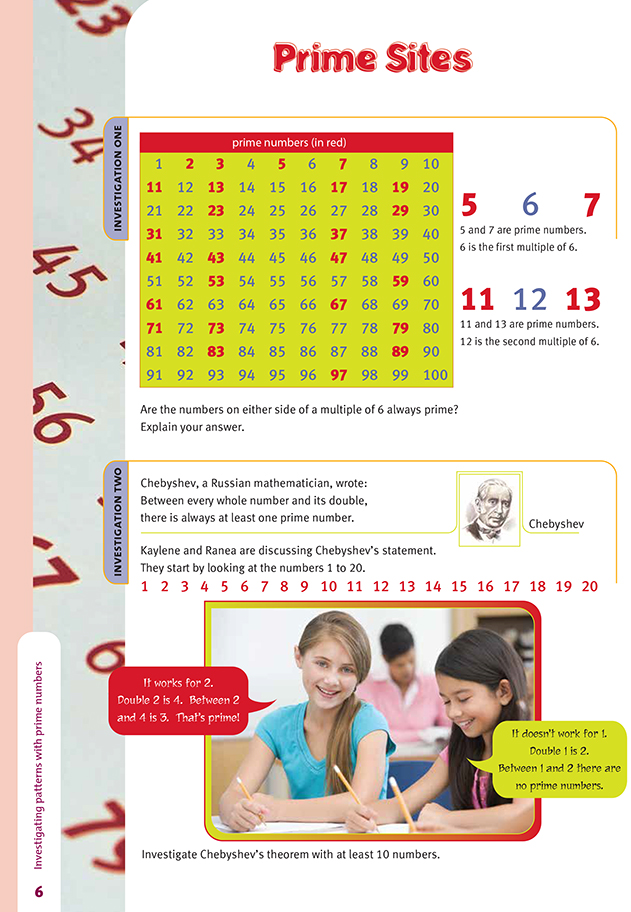This is a level 5 number link activity from the Figure It Out series. It relates to Stage 8 of the Number Framework.
A PDF of the student activity is included.
Click on the image to enlarge it. Click again to close. Download PDF (180 KB)
investigate patterns with prime numbers
FIO, Link, Number, Book Four, Prime Sites, page 6
Investigation One
One of the most interesting fields of mathematics is number theory, which is the investigation of numbers and their properties and relationships. Mathematicians have studied prime numbers for thousands of years.
The students can show the details of this investigation by circling prime numbers and multiples of 6 in different colours on the hundreds board supplied. A modified grid on squared paper will enable them to see the results of the conjecture in Investigation One more clearly:
This shows that while the original conjecture does not hold true, each prime number greater than 3 is either one before or one after a multiple of 6.
Investigation Two
This investigation is similar to Investigation One. It should give the students an opportunity to use a calculator and test some larger numbers up to 200 and beyond, both for the theorem and for their relationship to prime numbers.
As an extension, you could ask the students to:
• explore a prime number theorem known as Goldbach’s conjecture. In 1742, Christian Goldbach conjectured that every positive, even integer greater than 2 can be written as the sum of two prime numbers and that every odd number greater than 7 can be expressed as the sum of three odd prime numbers. Find out if the conjecture is right.
• compare the gaps between successive prime numbers in 1 to 100 with those for the prime numbers in 101 to 200. (In general, they are more spread out, and this trend continues as the numbers get larger.)
• explore grids of sizes other than that in Investigation One to see if other number relationships exist.
• explore the “perfect number”. This is another special number of interest to mathematicians. It is a number that equals the sum of its factors apart from itself. The first one is 6 (from 3 + 2 + 1 = 6). The students can be challenged to find the next two or three (28, 496, and 8 128). After 8 128, the perfect numbers become enormous.
Answers to Activities
Investigation One
No, not all whole numbers on either side of a multiple of 6 are prime numbers.
For example, with 23, 24, 25: only 23 is a prime number.
Investigation Two
Chebyshev’s theorem holds for any whole numbers greater than 1.

